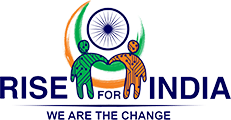It was raining when I woke up. Being overloaded with work at the office, this seemed to be the perfect respite I needed. I went outside, feeling the rain drops on my face. I felt rejuvenated and reborn. My eyes fell upon a potted plant on my terrace. It was probably feeling what I was feeling, it had transformed in a matter of minutes! Gone were the droopiness and the pale color of the leaves. It stood there proudly, a gorgeous and bright green plant.
“It’s amazing what a few minutes of rain can do…” I thought.
Being a primarily agrarian economy, our fates are romantically involved with the rains. The occurrence of rains has to be optimal. It can’t be less, it can’t be too much, it can’t be before time and it can’t be late.
“PHEW”
Aren’t we the demanding girl friend stereotype from the movies? Anyone else reminded of Pyar ka punchanama? (Maybe I am watching too many movies)
Everything aside, rains are the lifeline of the Indian economy. Improper rainfall causes havoc almost every year. Premature rains flattened the ripened wheat crops around my region last year. Paddy crops need a lot of water logging for the grain to absorb water, the primary source of which is the rain. The fates and, sadly, the lives of the farmers are inextricably linked to the rains.
Farmers don’t have monthly incomes like us, they earn in crop seasons. Mostly two crop seasons a year; Rabi and Kharif. They use the period in between crops for, say, vegetables, or pulses. So if they lose one major crop, instantly their annual income slashes into half. Imagine waking up one day and realizing that you just lost half of your annual income overnight; especially if you have loans and mortgages to pay. Such is the impact of rains on the farmer.
Rainfall affects not only the farmers, but the whole country. Damaged crops snowball into a chain reaction of inflation. The supply of food grains is considerably reduced which in turn increases the price of the food grains throughout the region. The chain of events which follows is:-
- It reduces the disposable income (the income which a person has after meeting his basic needs).
- This reduces the purchasing power of the people.
- The market demand decreases due to the reduced purchasing power of the people.
- Industrial production is affected because of the decreased demand.
- Reduced production implies lesser salaries for the daily wage earners and the casual labor.
- It also implies lesser tax revenues for the government,
- That results in a lesser amount available for spending on public welfare.
- This increases public debt of the government.
- Then the RBI takes countermeasures like slashing interest rates to boost borrowings so that industries get more debts to run businesses and to reduce the burden of finance costs to them.
- This reduces the rates we get on our bank investments like the Fixed and recurring deposits, reducing the incomes of retired folk or people dependant on interest or anyone investing in them.
This is such a frustrating phenomenon that we are so dependent on a factor beyond our control. Such is the nature of our economy that improper rains in a certain part of a country can affect the rest of the nation dramatically.
We cannot control the rains; but what is in our hands is the proper utilization of fresh water. Be it rain water or from other sources like rivers, ponds and wells.
We do see various advertisements from various Governments regarding conservation of rainwater and healthy practices with relation to potable water and sanitation. The big question is.. ARE THEY ENOUGH?
Also, are WE doing enough?

